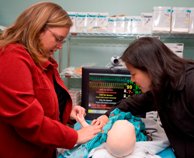Health care needs greater accountability, not excuses

I recently spoke to an executive in the energy industry who had a joint replacement at a hospital in New York. His wound developed an infection, which required four additional hospital admissions and several operations. He asked me about hand hygiene in hospitals. Proudly, I told him that, at Johns Hopkins Hospital, we are at 80 percent compliance with hand hygiene, up from 30 percent not that long ago. I focused on the improvement. He focused on the failures. "So," he said pointedly, "one in five times you do not comply with basic hand washing rules, potentially causing infections—or even death." He asked what we are doing about it.
I told him how we try to learn from the high performers and to improve the poor performers, how we train staff on the importance of hand hygiene, how we report compliance rates to unit teams, how we put pictures of patients with the words “please wash” outside their rooms.
The executive said, "All that is great, but where is the accountability?" In any other industry, there is accountability to ensure staff comply with safety standards, standards that are often much less consequential than hand washing. Other industries help staff improve compliance; they also hold local managers accountable for poor performance. To get results, you must both support staff and hold them responsible.
Read More »Health care needs greater accountability, not excuses
 I recently gave a talk to the American Medical Student Association. The energy in the room was palpable. The students were excited, passionate and hopeful. We spoke about the urgent need to reduce preventable harm and to enhance value, and we discussed that they will need to be the ones to lead these efforts.
I recently gave a talk to the American Medical Student Association. The energy in the room was palpable. The students were excited, passionate and hopeful. We spoke about the urgent need to reduce preventable harm and to enhance value, and we discussed that they will need to be the ones to lead these efforts. WANTED: Clinicians for long-term relationship to lead unit and department safety efforts. Must be passionate about improving patient outcomes and value, have skills needed to lead these efforts, and enjoy working as part of a team.
WANTED: Clinicians for long-term relationship to lead unit and department safety efforts. Must be passionate about improving patient outcomes and value, have skills needed to lead these efforts, and enjoy working as part of a team.